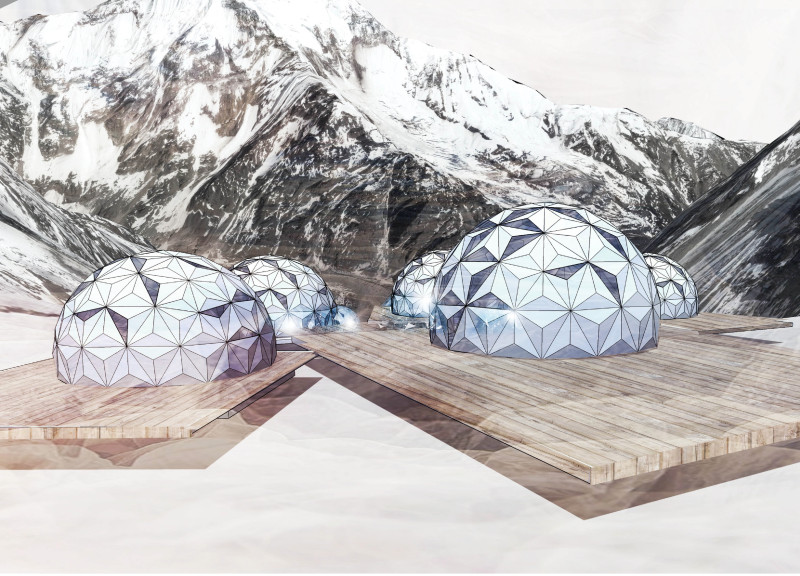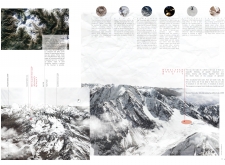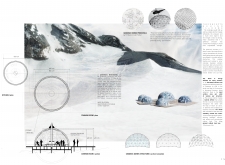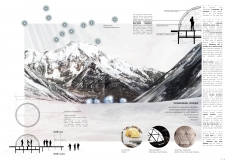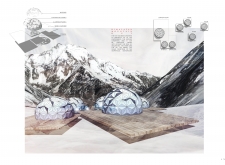5 key facts about this project
This project serves primarily as a shelter for climbers and trekkers who navigate the peaks and valleys of the Himalayan region. It is conceived not just as a temporary refuge, but as a comfortable living space that fosters community and engagement among its occupants. The design features geodesic domes, a choice informed by their structural integrity and ability to withstand harsh environmental conditions. These domes provide an efficient use of materials, reducing waste while maximizing space.
Each element of the Himalayan Mountain Hut has been thoughtfully designed to reflect the needs of its occupants. Internally, the layout consists of both communal and private spaces, allowing for social interaction while offering privacy when desired. A central common area encourages gatherings and shared experiences, while well-appointed private rooms ensure restful retreats. The incorporation of a kitchen area and a communal fireplace adds warmth and familiarity, creating a homely atmosphere amidst the remote wilderness.
The choice of materials plays a crucial role in the project's design approach. Photovoltaic panels are utilized to capture solar energy, ensuring the hut remains self-sufficient in terms of power. The use of durable aluminum panels provides not only a reflective quality for aesthetic appeal but also longevity against the elements. Natural wood is employed extensively throughout the interior, contributing to a warm, inviting ambiance. Multi-layer insulation is integrated to maintain stable internal conditions, significantly enhancing energy efficiency.
A unique aspect of this architectural project is its commitment to sustainability and environmental respect. The design incorporates rainwater harvesting systems and waste recycling facilities, acknowledging the limited resources available in high-altitude environments. This focus on sustainable living ensures that the hut minimizes its ecological footprint while providing essential amenities. Such considerations exemplify a modern architectural practice that prioritizes harmony with the natural landscape.
Moreover, the design ethos extends beyond mere functionality to engage with the cultural significance of the Himalayas. The structure is intended to resonate with local traditions and the enduring relationship communities maintain with their mountainous surroundings. By fostering a sense of place through architectural language, the project becomes not only a structure but a part of the cultural narrative that celebrates human connection to nature.
The Himalayan Mountain Hut stands as a testament to the possibilities of architecture in extreme environments. It utilizes innovative design approaches to create a sustainable and functional living space. The thoughtful integration of energy solutions, material choices, and spatial planning underscores its commitment to environmental sustainability. This project exemplifies the role of architecture as not just a shelter, but a collaborative space that enhances human experiences in some of the world's most breathtaking landscapes.
For those interested in exploring this architectural project further, reviewing the architectural plans, sections, and overall design elements will provide deeper insights into the thought processes and design strategies employed. Engaging with these details will enhance understanding of how architecture can effectively address the unique challenges posed by its environment while enriching the lives of its inhabitants.


